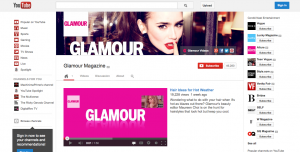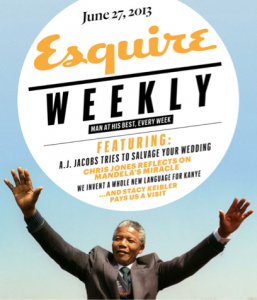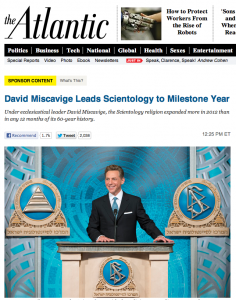This is the third post in a series on the state of tablets, digital magazines, and digital publishing trends. Read Part 1, 142.2% Growth Reveals Rapidly Evolving Tablet Market, and Part 2, Reader Demand Driving Digital Magazine Market Growth, on the TFP blog.
AT THE START OF EVERY NEW YEAR, industry analysts speculate about what the hot trends will be in the months to come. More than halfway into 2013, there’s now evidence to support some of their trend predictions, but three in particular stand out: video, native advertising, and mobile.
Video
According to a BI Intelligence report, “Online video audiences are expected to double in 2016, reaching 1.5 billion globally.” It’s no wonder, then, that even traditional publishers are trying to get in on the game. Here’s a sampling of some publishers’ video-related efforts so far this year:
- This week, Condé Nast announced that Vogue and Vanity Fair have struck deals with Discovery Communications to launch two TV shows on its Discovery and Ovation channels.
- This fall, Hearst’s Esquire magazine brand is launching the Esquire Network cable channel, targeting men in the 18-to-49 demographic who are “highly educated, upwardly mobile and upscale.”
 In March, Condé Nast Entertainment announced that it was launching a digital video network, starting with its GQ and Glamour brands, “across web, IPTV, mobile and tablet platforms, beginning with the newly created video hubs on their official sites … as well as YouTube channels.”
In March, Condé Nast Entertainment announced that it was launching a digital video network, starting with its GQ and Glamour brands, “across web, IPTV, mobile and tablet platforms, beginning with the newly created video hubs on their official sites … as well as YouTube channels.”- In May, Condé Nast added a video site and YouTube channel for Vogue and Wired, followed by a site and YouTube channel for Vanity Fair in July.
- The Atlantic promoted Kasia Cieplak-Mayr von Baldegg to Executive Producer for Atlantic video in April and said that it would be staffing up the department in the spring and summer.
- ComScore reported that in June, Americans viewed 20 billion video ads—the highest monthly tally on record—and 85.2% of the U.S. Internet audience viewed online video.
Mobile
In May, MRI’s Survey of the American Consumer found an 83% increase in digital readership over the past year. And according to a recent report from the Pew Research Center’s Internet & American Life Project, 34% of U.S. adults now own a tablet device, and 56% own smartphones. Given declines in print advertising as well, publishers have been keen on beefing up their mobile efforts this year—and that in some cases, print editions have been a casualty of that shift in focus.
- At the end of March, Hearst Magazines announced that it had reached a milestone, with 1 million readers subscribed to its tablet editions.
 In May, Esquire announced a weekly tablet edition that is free to subscribers and available for purchase for 99 cents an issue.
In May, Esquire announced a weekly tablet edition that is free to subscribers and available for purchase for 99 cents an issue.- In June, The Atlantic introduced a weekly edition for the iPad that will include content curated from online properties and the magazine’s print archives. The cost is $1.99 per issue, $2.99 a month, or $19.99 for an annual subscription.
- Also in June, Adobe announced that more than 100 million cumulative folios had been downloaded since the release of its Digital Publishing Suite software in March 2011, demonstrating the increase mobile readership on tablets and smartphones.
- This month, IDG announced that after 30 years, PC World will be going digital-only. The news came less than a week after the media company announced that Network World magazine would cease print publication.
- This July, media watchdog American Journalism Review announced that it would be shutting down its print edition to become a web-only publication.
Native Advertising
Whether you call it native advertising, sponsored content, content marketing, or an advertorial, most publishers have jumped on the bandwagon. A recent survey conducted by the Online Publishers Association found that 73% of its members are engaged in native advertising programs as they seek an alternative to the traditional banner ad.
However, such initiatives are not without their critics, and their risks. Here are just a few examples of how some publishers have tried to capitalize on native advertising, and some industry observers’ perspectives on the trend:
- A recent Adweek article warned that if standard best practices aren’t established among publishers as the line between advertising and editorial content blurs, the FTC might intervene and issue guidelines for native advertising to protect consumers, as it has previously for ad formats like TV infomercials.
 The Atlantic ran pro-Scientology sponsored content on its website that drew plenty of reader criticism for not meshing with the publication’s editorial character. The backlash resulted in the ad being pulled and the magazine’s president issuing an apology—and it provided a case study in how not to do native advertising.
The Atlantic ran pro-Scientology sponsored content on its website that drew plenty of reader criticism for not meshing with the publication’s editorial character. The backlash resulted in the ad being pulled and the magazine’s president issuing an apology—and it provided a case study in how not to do native advertising.- On the flip side, Digiday highlighted some native advertising campaigns done right, including an Atlantic/Sony campaign that profiled Sony customer Pixar.
- In May, Hearst jumped into the pool, announcing the availability of five native ad units, with content to be created by marketing, editorial, and/or the advertiser itself.
- A Washington Post article examined native advertising and highlighted BuzzFeed’s practices, noting that native ads are the viral-news site’s sole source of revenue.
- EContent magazine points to native advertising as an opportunity publishers can capitalize on by offering advertisers content-production services, along with a an engaged audience. Maintaining high standards for sponsored content, whether it’s produced externally or within, is key.
- Forbes’ Chief Product Officer, Lewis DVorkin, recently described the magazine as “a recognized leader in the move to native ads” and offered an inside look at the publication’s perspective and practices.
Posted by: Gina Barrett

